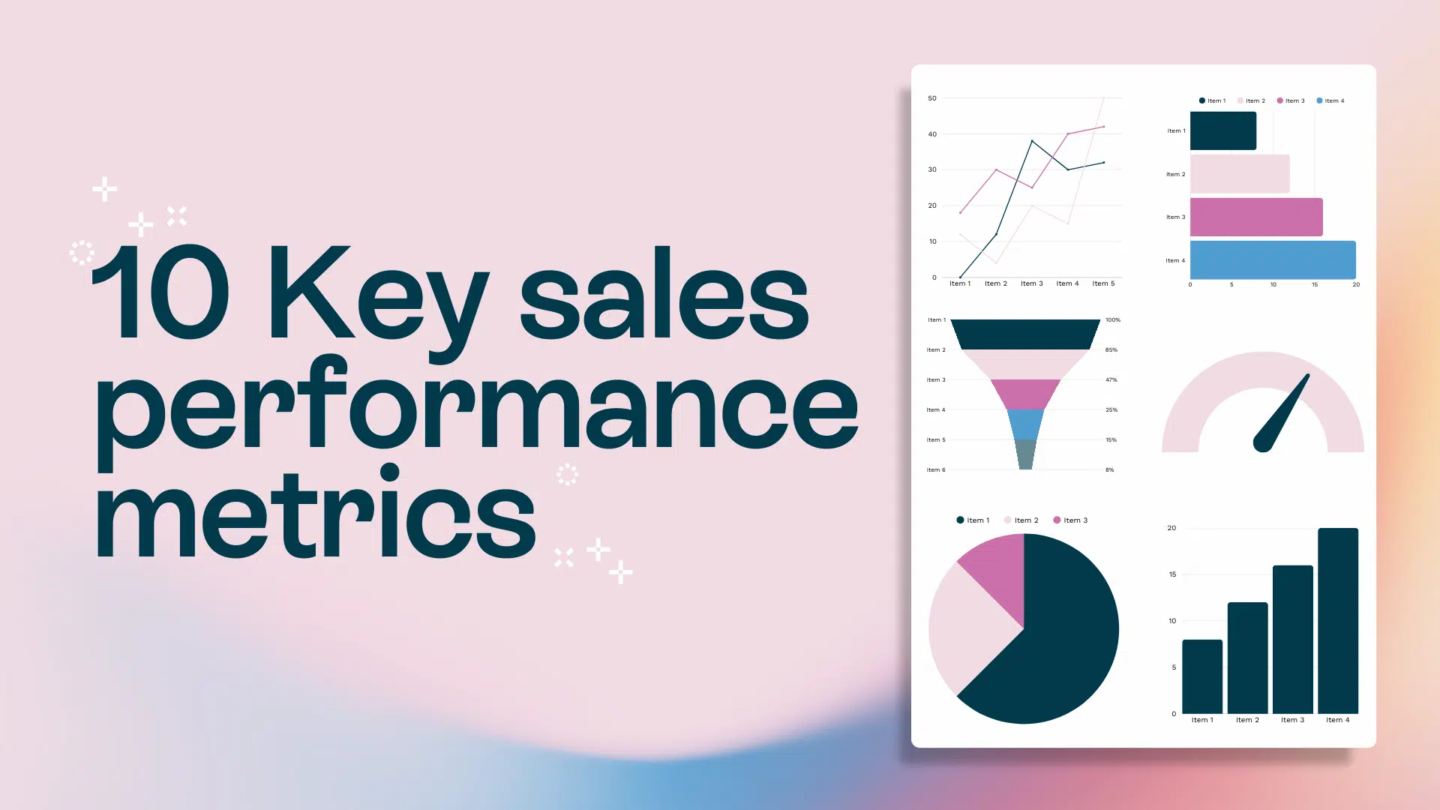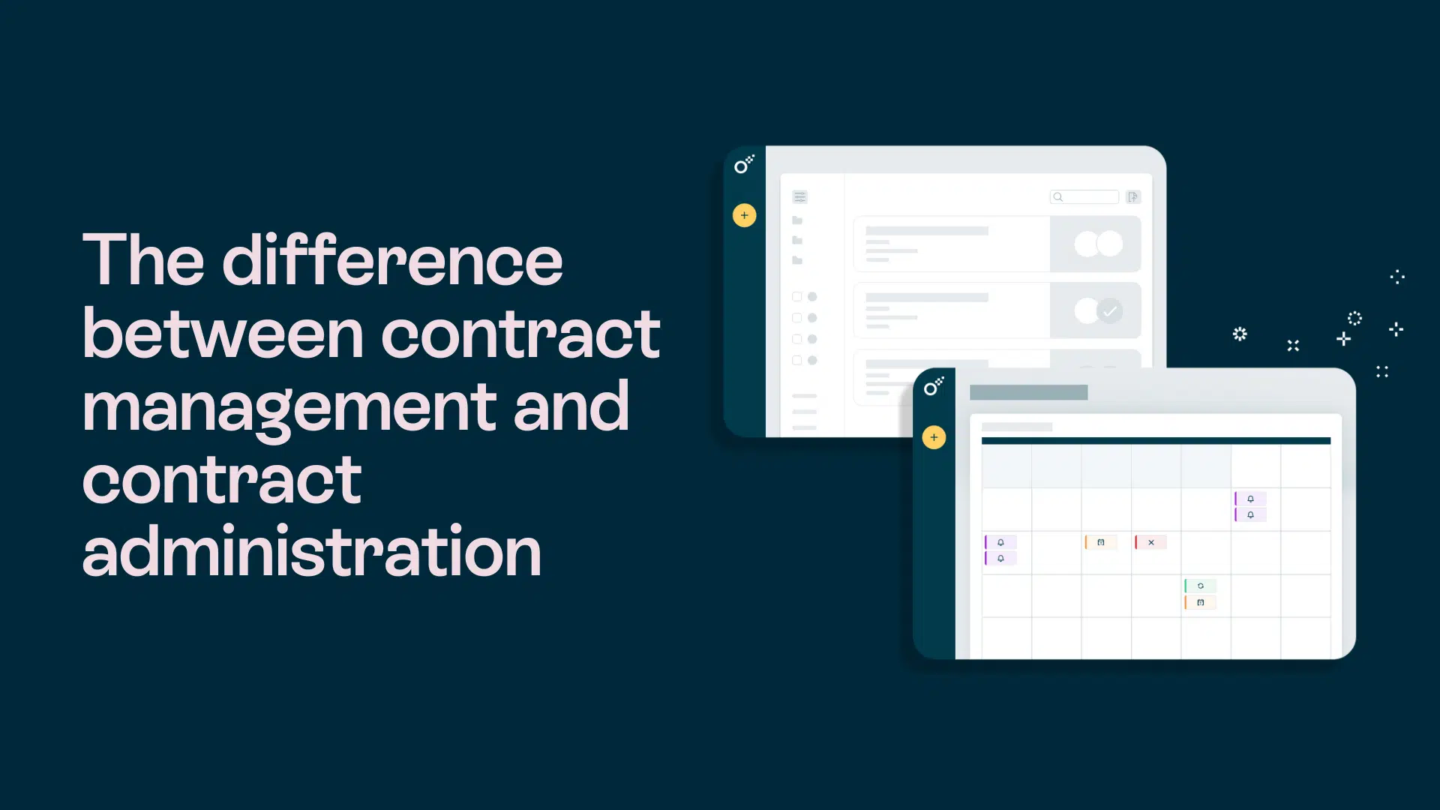Consistently strong sales and healthy pipelines are pillars of any thriving business, regardless of size, location, or industry. But how do you know whether your sales team is performing at its best — or whether the process you follow isn’t delivering the results you want?
Tracking key sales performance metrics is the answer. These can be as broad or as granular as you need, depending on the insight you’re after.
In this article, we’ll dig into sales performance metrics and highlight the ten you should measure regularly to drive success.

What are sales performance metrics?
Key performance metrics — also known as KPIs — are measurable values that show how effectively a business is achieving its objectives.
Used across industries, KPIs help identify what’s working, what isn’t, and where to improve. They support strategy, target-setting, and evaluation of initiatives and campaigns.
Within that, sales performance metrics measure how your sales team performs — both collectively and at an individual level.
They help you evaluate the effectiveness and efficiency of your entire sales process. By tracking them, you can:
- Fine-tune strategy and process
- Set medium and long-term objectives and milestones
- Pinpoint team strengths and weaknesses
- Design fair, motivating incentive plans (bonuses, commission, etc.)
Whether you want to lift team performance or coach specific reps, tracking these metrics is essential for making informed, data-driven decisions.
Key sales performance metrics to track and their importance
Now that you know what sales performance metrics are, let’s reveal the ten most important ones to measure and review on a regular basis.
1. Revenue per Sales Rep
Assesses individual contribution over a month, quarter, or year.
Formula:
Revenue per rep = Total company sales revenue ÷ Number of sales reps
This reveals individual and team productivity and informs strategy and resource allocation.
2. Sales cycle length
Measures the average time to convert a lead into a customer. Shorter cycles typically indicate higher effectiveness and faster cash flow.
Formula:
Sales cycle length = Total days to close all deals ÷ Number of deals
Use it to locate bottlenecks, streamline steps, and better understand buyer behaviour.
Read also: How to reduce the sales cycle with e-signatures

3. Conversion and win rates
- Conversion rate = % of qualified leads that become customers — a read on funnel effectiveness from lead to sale.
- Win rate = % of opportunities (later-stage) that close as won — a read on late-stage execution.
Formulas:
Conversion rate = (New customers ÷ Qualified leads) × 100
Win rate = (Closed-won deals ÷ Total deals in pipeline) × 100
Improve these by strengthening CX, tightening targeting, and coaching reps based on individual win rates.
4. Customer lifetime value (CLTV)
CLTV refers to the total revenue that your business can expect to generate from each customer across the entire duration of your relationship with them.
Total revenue you can expect from a customer over the relationship.
Formula (simple):
CLTV = (Value of a sale × Average customer lifetime) – Acquisition costs
Focus retention and expansion efforts on high-CLTV segments to maximise ROI.
5. Sales quota attainment
Typically, your company would have a “sales quota”—a sales goal that your sales team and individual reps should work toward regularly.
Shows how a team or rep performs against target within a period.
Formula:
Quota attainment = (Actual bookings ÷ Sales quota) × 100
Great for performance management, coaching, and capacity planning.

6. Cost of customer acquisition (CAC)
Average cost to acquire a new customer.
Formula:
CAC = Total sales & marketing spend to acquire customers ÷ Number of customers acquired (period)
Track CAC alongside CLTV to judge efficiency and scalable growth.
7. Customer churn rate
The rate at which customers leave within a period.
Formula:
Churn rate = (Customers lost during period ÷ Customers at start of period) × 100
Investigate high churn to uncover issues (onboarding, support, pricing, product fit) and implement retention plans.
This could reveal areas that need improvement, such as poor customer service support or an incorrect pricing strategy. You’ll then be able to develop retention plans and strategies, whether this be a better call center QA process or a restructuring of prices to eliminate the problems and keep your customers close.
8. Average deal size
The average revenue per closed-won deal.
Formula:
Average deal size = Total revenue (period) ÷ Number of closed-won opportunities
Use it to spot buying patterns, refine pricing and packaging, and improve forecasting.
Read also: How to create a sales process that wins
Read also: How to create a sales process that wins?

9. Key account performance metrics
What is account-based marketing for? What about inbound marketing? These types of marketing strategies are popular among businesses as they help greatly to secure key accounts.
These refer to the most important customers you have—those with the highest potential to drive long-term revenue and growth. Monitoring their performance helps ensure you’re nurturing the right relationships.
Track your most valuable accounts — those with the highest long-term potential.
Suggested KPIs:
- Revenue contribution: Revenue − Variable costs
- Customer retention rate:
((Customers at end of period − New customers acquired) ÷ Customers at start of period) × 100 - Engagement: (Content interactions ÷ Followers) × 100
These help you prioritise resources and deepen relationships where it matters most.
10. Sales activity levels
Whether you’re focused on boosting the sales from influencer marketing campaigns or you want to increase revenue across the board, another great metric to trackA leading indicator of pipeline health and rep productivity.
Track volumes for:
- Meetings booked
- Calls made
- Demos conducted
Monitoring activities clarifies execution quality, highlights what drives outcomes, and guides enablement (playbooks, tooling, and training).
Appropriate sales enablement solutions can also be implemented to assist your sales reps and provide them with the tools they need to succeed.
It’s up to the leaders or managers to decide which activities are most important to their company’s sales process so that the right sales activity volume KPIs can be tracked.
Potential challenges in tracking sales performance metrics
Tracking key sales performance metrics isn’t always a walk in the park. Below, we discuss some of the main hurdles you may encounter along the way.
Inaccurate or incomplete data
Poor data quality skews KPIs and decisions. Establish clear definitions, validation rules, and ownership.
Data silos across systems
Fragmented data (CRM, marketing, support, email) leads to inconsistent reporting. Create a single source of truth and ensure robust security.
Data integration hurdles
Invest in a sound integration and data-management strategy to standardise inputs and definitions.
Inconsistent KPI definitions
Align on precise, consistent formulas and reporting cadences to keep everyone focused on what matters.
Analysing and presenting data effectively
Use tools that match your goals — not just legacy BI. Consider AI-assisted forecasting using inputs such as cycle length and activity levels, and train teams to use them well.
Read also: How to create a sales process that wins?

Conclusion
If you’re serious about improving sales performance and growing your customer base, tracking the right metrics is non-negotiable.
From cycle length and conversion rate to CAC, CLTV, and average deal size, these indicators show how the team performs overall and where individual reps may need support. Measured and used well, they enable proactive, cross-functional improvements in sales, marketing, support, and product — and help you make smarter, faster decisions that move the numbers.







